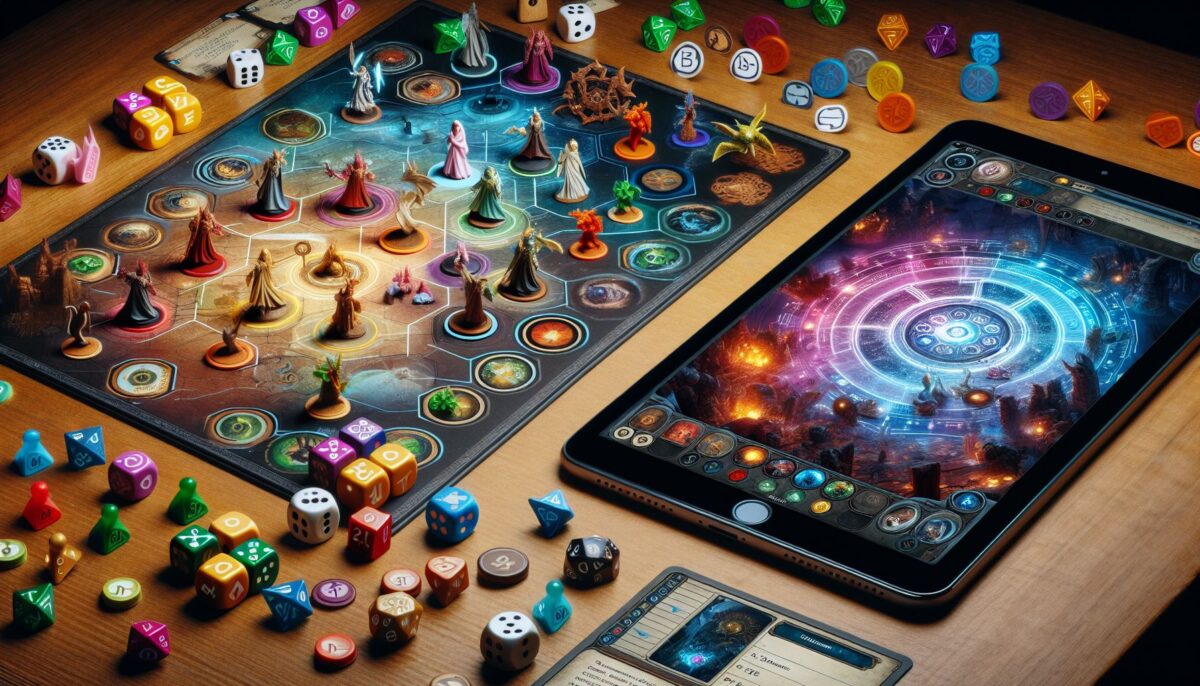Gloomhaven is not just a game; it’s an experience. For those who may not be familiar, Glightweight light of the modern board gaming world, casting a long shadow over its tabletop brethren with its deep strategy, immense campaign, and intricate character development. And now, it has made the innovative leap from cardboard to pixels, bringing with it a wealth of opportunity as well as a heap of expectations. So, how does the digital version hold up against its physical progenitor? Let’s delve into the gloomy yet enticing world of Gloomhaven and see what treasures and traps it holds for gamers and enthusiasts alike.
Firstly, we have to acknowledge the colossal effort in bringing a behemoth like Gloomhaven to the digital realm. The original table top game, designed by Isaac Childres, is renowned for its sheer volume of content and the depth of its gameplay mechanics. Players can spend hundreds of hours just scratching the surface of its campaign. Its digital adaptation, therefore, had to encapsulate the vastness of Gloomhaven’s content along with the intricacies of its rule set—and it does so with respectable finesse.
Entering the realms of this digital adaptation, players will immediately recognize the faithful recreation of the board game’s aesthetics. The art is true to form, with rich textures and characters that remain loyal to the original designs, giving fans a wave of familiarity. Transferring the physical components to their digital counterparts, the game offers a clutter-free gaming environment, automating the setup and breakdown that consume large chunks of time in the board game.
One of the game’s strong points is the meticulously adapted turn-based strategic combat. Lifting directly from the board game, the system demands careful planning and foresight. Players must consider the initiative, range, and effect of their attack and skill cards, adding a layer of strategy that’s more cerebral than your average dungeon crawler. Even though RNG (random number generation) can occasionally throw a wrench in the works, the challenge is usually a matter of intellect rather than chance.
Another feather in its cap is the online multiplayer function. While the table top version emphasizes the shared social experience, the digital version replicates this well, considering the barrier of screens. The ability to dive into a dungeon with friends—and the added convenience of asynchronous play—ensures that even the busiest adventurers can partake in the quest without skipnpj a beat.
However, transitioning from the tangible to the digital is not without its snags. The charm of handling cards, figurines, and tokens is significantly absent in the digital edition. There’s a certain magic in the physical interactions of board gaming that a screen simply can’t recreate. Veteran table top gamers might miss the tactile nature of the original Gloomhaven.
Another point of contention is the game’s steep learning curve. While the digital version does its best with tutorials and tooltips, the complexity of Gloomhaven’s mechanics can still be overwhelming, particularly for those new to the title. The board game allowed players to ease into its complexity with gradual introductions to rules through the campaign, but the digital game can sometimes feel like it’s hurtling rules and systems at players with little regard for pacing.
The interface also presents its own challenges. While sleek and functional, there are moments of clunkiness and some unintuitive designs that can lead to frustration, especially during intense battles where every move counts. Newcomers to Gloomhaven might find the transition from physical to digital less than seamless, and even veterans could stumble while navigating the menus and screens that replace their familiar cardboard and paper components.
In terms of content and longevity, the game delivers copiously. With a full campaign to slog through and multiple side scenarios and puzzles, players are unlikely to exhaust the digital Gloomhaven’s offerings quickly. Additionally, for those who balk at the high price point and shelf space required of the table top version, the digital adaptation offers an alluring alternative that’s as kind to your wallet as it is to your living space.
There’s also an elephant in the room—the game is unforgiving, and it’s proud of it. Gloomhaven doesn’t coddle its players. Success requires meticulous planning, adaptability, and a fair share of trial and error. Some players will revel in the challenge; others might find it demoralizing. It’s essential to know this going in, as Gloomhaven definitely leans towards the “hardcore” end of the gaming spectrum.
As for the technical side, the transition to digital has been relatively smooth, but not without glitches. Minor bugs and occasional crashes have been reported, though developers have been diligent with patches and updates. The game is ever-improving, and the commitment to its refinement is clear—which is a positive sign for its future.
In conclusion, the digital adaptation of Gloomhaven is much like setting foot into the menacing dungeons it’s known for: challenging, sometimes bewildering, but packed with opportunities for those willing to invest the effort. As the digital curtain parts to reveal Gloomhaven’s immersive landscape, players will find a game that is rich with content, depth, and potential. While it can’t fully replicate the physical connection of its board game counterpart, for those who seek a robust strategic experience without the clutter of cardboard, Gloomhaven’s digital form is a serious contender. Just remember—within its gloomy walls, fortune favors not only the bold but also the patient and the strategic.
